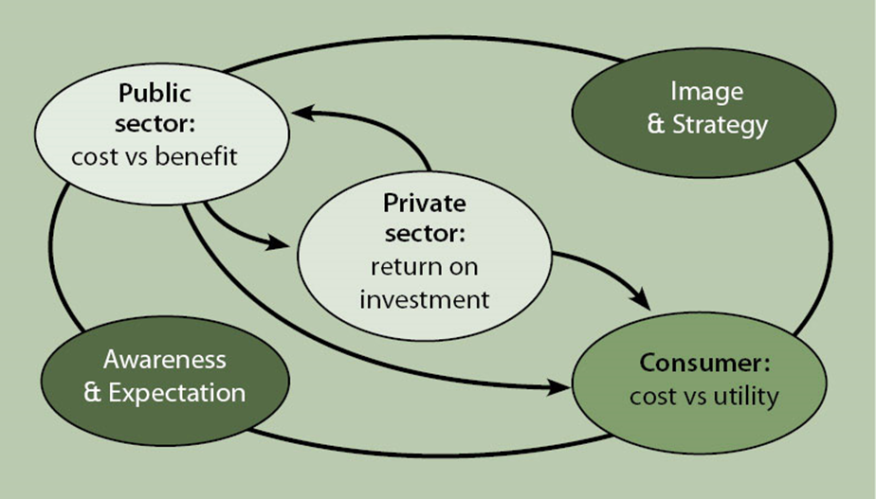
Road Network Operations
& Intelligent Transport Systems
A guide for practitioners!

Road Network Operations
& Intelligent Transport Systems
A guide for practitioners!
ITS covers a wide range of systems and services. Different players are involved – so stakeholder roles and attitudes and the legal and institutional issues vary for each sector. There will be wide variations between different applications and individual institutions, but there are three broad groups of stakeholders that invest in ITS:
These three groups adopt very different evaluation systems when they consider whether to invest and allocate their budgets to ITS deployments:
The interactions between these very different requirements is illustrated below. For ITS projects to be viable, they will often require justification against at least two, if not all three of the underlying value criteria. Failure to meet one or other of the investment tests will produce a classic “chicken and egg situation” – who goes first, the supplier or the purchaser in making a commitment to the system or product?

Private sector involvement is generally motivated by the opportunity to generate revenue and/or make a profit. Commercial businesses must be able to generate a profit through their activities to survive in a competitive market place. The continuing development of technology and advances in user needs and expectations means that the potential for new products and services is always there. The private sector can provide these new products and services, as and when time demands. Increasingly, the public sector is looking to the private sector, for the investment in ITS infrastructure and the delivery of certain ITS services – such as providing travel data. The private sector business case will largely depend on risk assessment of several factors. (See Formulating a Programme)
It is likely that the private sector will wish to develop market opportunities for new service needs arising from public sector investments in ITS. For example, a company might make use of traffic data (advisory and predictive) collected by public agencies to develop customised, real time travel information as a value added service for its customers. Arrangements of this kind – if they are exclusive to one provider – can become problematic unless they have been awarded on the basis of fair and open competition.
Private investment in road infrastructure and traffic services is growing as many public agencies struggle to meet increased travel demand within limited budgets. For example, toll roads and traffic control centres are often implemented through a partnership contract or franchise (See Contracts and Toll Collection). Private sector participation offers new opportunities and challenges to the transport industry.
The challenge in a public private partnership lies in how to achieve a balance between the policies and objectives of public agencies – while satisfying the business goals of private companies. To achieve a successful public private partnership, various issues need to be addressed:
In preparation for negotiations with private industry, public agencies need to determine their requirements – which may be encapsulated in an ITS regional architecture. By defining requirements before entering into a resource sharing agreement the stakeholders will be in a stronger position to conduct the negotiations.
Motivating factors for public private partnerships in ITS include:
Examples of viable partnerships which benefit both sectors include:
ERTICO – ITS Europe represents the interests and expertise of around 100 public and private partners involved in providing Intelligent Transport Systems (ITS) services. It facilitates the safe, secure, clean, efficient and comfortable mobility of people and goods in Europe and beyond through activities supporting the development and deployment of ITS.
Specifically, ERTICO:
ERTICO’s public private partners include mobile network operators, public authorities, academic and research institutions, service providers, suppliers, traffic and transport industry, users and vehicle manufacturers.
Source: http://www.ertico.com/assets/Partners-List/Partner-listJune-142013.pdf